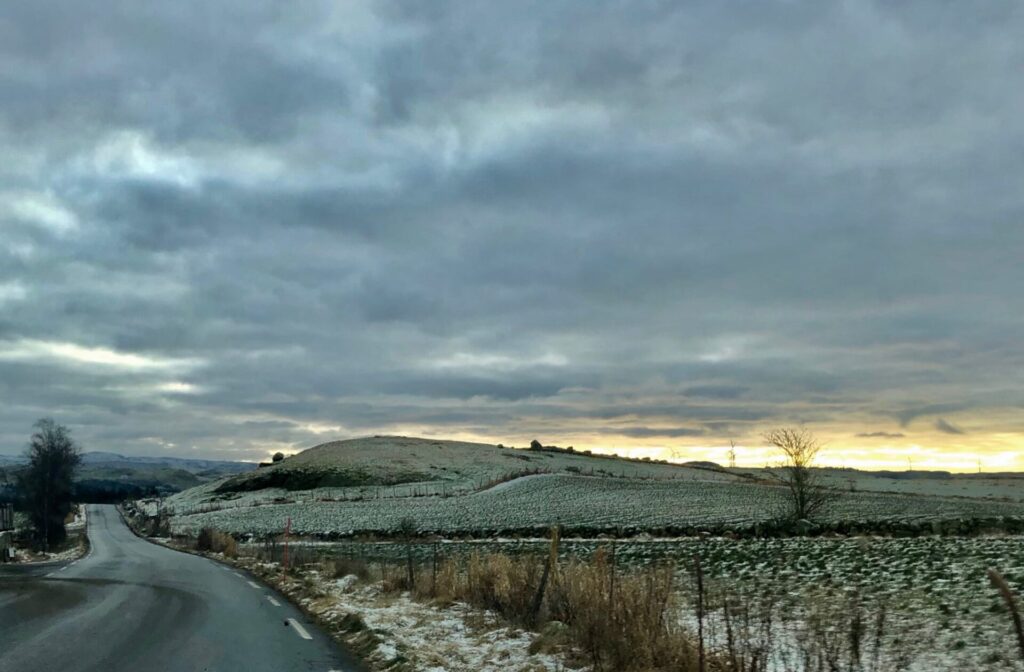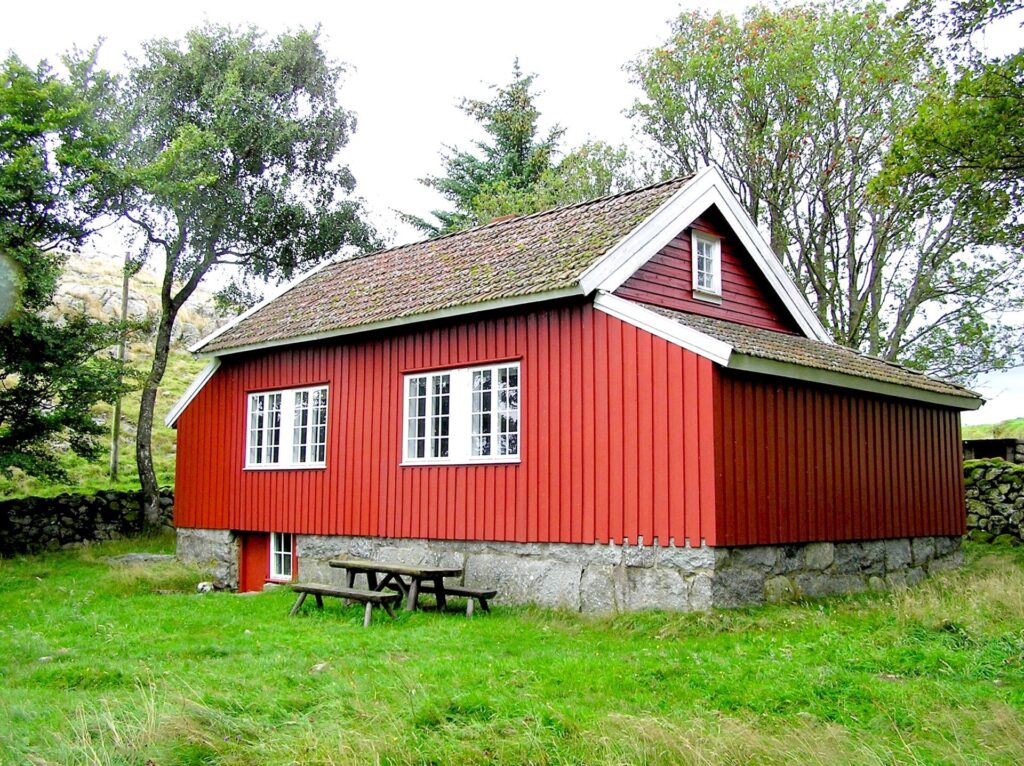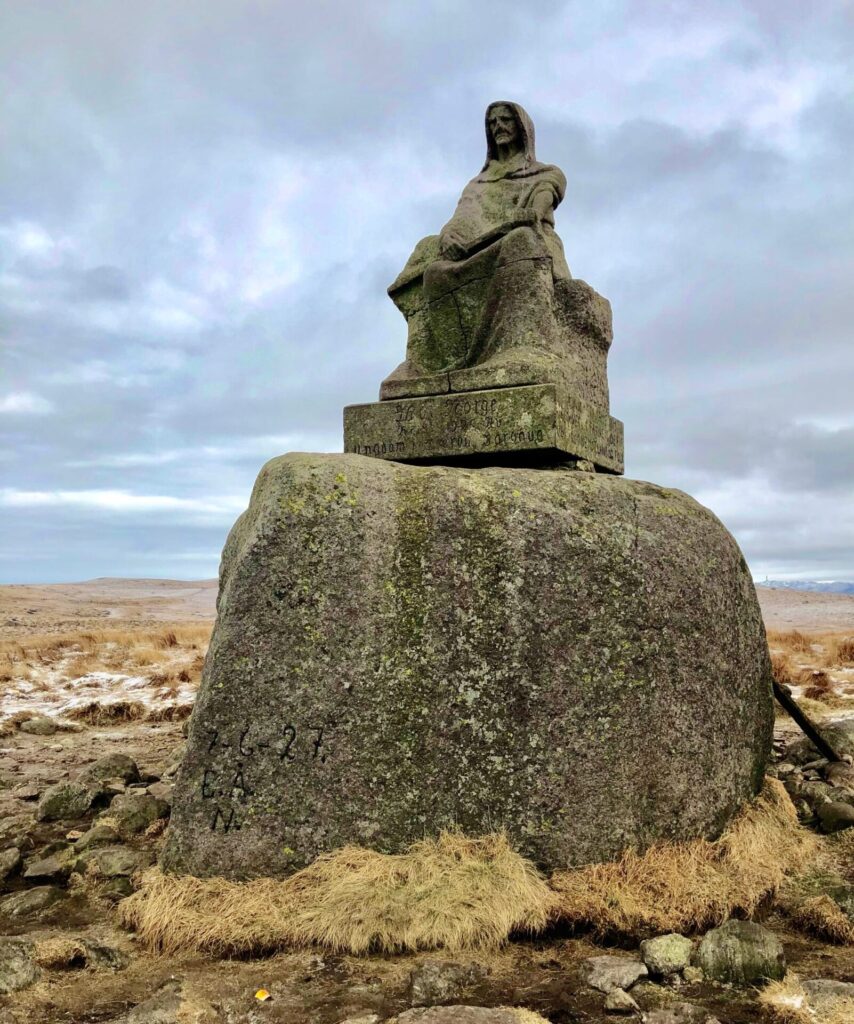
HØG-JÆREN
Høg-Jæren is the inner part of Sør-Jæren, south of Undheim, where the landscape is higher than 120 m.a.s.l.
This region has a moraine landscape with heather and bog interspersed with rocks and stone blocks. Høg-Jæren has also large areas of cultivated pasture.
The highest point at Høg-Jæren is Synesvarden, the top is 359 m.a.s.l, and is beside Steinkjerringå a popular hiking destination.

KNUDAHEIO – the summerhouse of
poet Arne Garborg
On the way to Høg-Jæren, driving from Undheim, you will find Knudaheio – the summerhouse of Arne Garborg.

Knudaheio – was built in 1899 and is a “jærhus”. Garborg came here to write every year – almost until his death in 1924.
Knudaheio was poet Arne Garborg’s summer residence at Jæren, from 1899-1923. In 1895, when he was looking for a place to built a summerhouse, he was writing on his masterpiece “Haugtussa“. Knudaheio inspired his major biographical work “Knudaheio Letters” of 1904.
Knudaheio is also JÆRHUS – but not as old as his childhood house Garborgheimen ( 1848) which is also a “jærhus”
Knudaheio has a fantastic view over Jæren, with the landscape that Garborg so loved. The furnishings are authentic and the exterior is unchanged since 1909 when Garborg fixed up his small house. Exhibited are photographs of Garborg, the author’s furniture and other possessions, and first editions of most of his books.
n 1924, the widow Hulda Garborg donated the property to Time municipality and is now a museum.
I 2001 a monument of Arne Garborg was erected at Knudaheio. The stone head “All this glorious vision” is carved by artist Hugo Frank Wathne.
Open Sunday and public holidays 12 – 16 from 1 May – 30 September. Open daily in July and half August 12 – 17.
Location: 13 km from Bryne at Rv504, then Fv 201 from Undheim
Address: Sikvalandsvegen 72, 4342 Undheim.
.
HIKE TO STEINKJERRINGÅ

Jæren offers a lot of unique walks along its many beaches, but if you want to experience the Høg-Jæren, Steinkjerringå is a great alternative.
Get to know how the statue
“Steinkjerringå” originally called “Mor Norge”
(Mother Norway), ended up at Høg-Jæren…
We had this hike in January this year, a bit cold and icy along the route,
but a nice experience. Easy hiking area that is suitable for most people.
We started from Holmavatn, and it is about a 6,5 km walk (to and forth) and it takes about 1,5-2 hours. You will walk on a well-prepared path along a grassy and heather area and some places at more like a gravel road
(made for tractors). We also passed a couple of ponds. As we came closer to Steinkjerringå, there was a great view of the ocean. It was cloudy but a magical light over the horizon – Jærelyset !
How the statue ended up at Høg-Jæren
n 1898, the Steinkjerringå (the woman stone statue) was made by Sigurd Sørensen with the artist name S. Neandros. The monument was original to be placed in front of Kongsgård school in Stavanger. This never took place, however, and in 1924, Emelankton Aadnesen from Nærbø contacted the owner, bricklayer Asbjørn Ellingsen. Subsequently, he was allowed to move the statue to Høg-Jæren. In 1925, the neat amount of NOK 550,- was raised for transport. After two years of struggle, the statue Mother Norway or popularly called “Steinkjerringå”, was in place in Aniksdalsheia. The weight of the statue is around three tons and had to be divided into three parts during transport.
If you want a longer hike in this area – you can take a hike to Synesvarden.
It is the highest point at Høg-Jæren, 359 m.a.s.l. You can either continue from Steinkjerringå to Synesvarden, a roundtrip of 9 km altogether, which takes about 3 hours. Or you can just walk the distance Holmevatn – Synesvarden, 5 km (to and forth), which takes about 2 hours.


